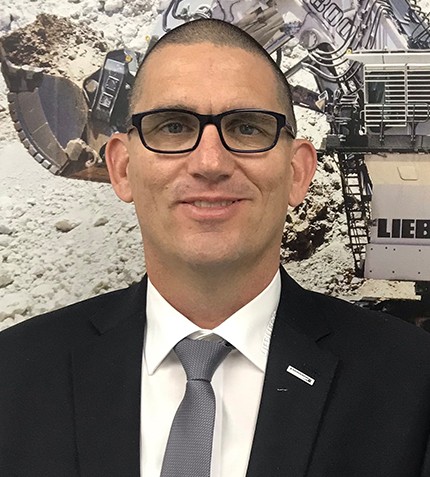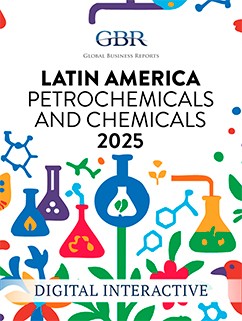
"The Chilean mining industry was already leading the way to develop more autonomous type mining before the pandemic. However, as social distancing measures were enforced, there has been a stronger emphasis on autonomous mining equipment as the mines wanted to minimise the exposure of their workforce."
Dale Clayton
MANAGING DIRECTOR, LIEBHERR CHILE
What has been Liebherr’s biggest milestone since its establishment in Chile in 2001?
A turning point for us was our second contract with Codelco at the Radomiro Tomic mine, which led to our third at Collahuasi. In October last year, we started the ESTRS trial in Escondida for BHP to determine their future truck requirements, another great milestone. We also developed our ultra-class excavator fleets, firstly with Thiess entering in the market in 2017. Last year we were very pleased to deliver the first R9800 800 tonne excavator for Liebherr in North and South America to BHP at the Spence mine. We are extremely happy with our achievements that have facilitated our steady growth. We are also proud of the strength of our organisation which allowed us to start successful projects in 2020 amid challenging Covid restrictions.
How was Liebherr able to maintain supply chain continuity in the face of the pandemic and the resulting delays?
The management team’s focus was first to ensure the safety of our biggest asset: our people. We did this by following the government regulations, our expertise and relying on our head office in France as they were also experiencing strict quarantine conditions including the closure of our excavator factory. For spare parts supply, we have a very advanced planning department and, with this, we project our parts usage 18 months in advance. There were some delays in deliveries of spare parts, however we managed to use our existing stock in Chile to compensate. We also adjusted our orders in 2020 to account for increased lead times from our suppliers because of Covid. In 2021, we continue to use these adjustments to our processes to maintain parts supply.
Automation is playing a greater role in the Chilean mining industry. How does the technology Liebherr provide allow it to differentiate itself in the market?
We are witnessing an increasing demand for automated products in Chile, especially for autonomous trucks and smart equipment. Liebherr made the decision early to offer our truck autonomy packages via an open protocol philosophy, allowing our customers to use our truck with any management system available on the market. This gives the mines more flexibility as they are not bound to one OEM supplier.
We also offer our LMD system (Liebherr Mining Data) allowing data from the equipment to be analysed remotely, as opposed to physically downloading the data from the truck. This allows us to send data on a truck’s status so we can study the truck’s parameters to plan maintenance accordingly. We are constantly developing this system to improve.
Did the pandemic accelerate the move towards autonomous mining in Chile?
The Chilean mining industry was already leading the way to develop more autonomous type mining before the pandemic. However, as social distancing measures were enforced, there has been a stronger emphasis on autonomous mining equipment as the mines wanted to minimise the exposure of their workforce. For Liebherr, it is also important to consider that the autonomous technology and new developments need to demonstrate benefit to the operations and not solely a reduction in personnel.
We also believe that in the upcoming years, the mining industry will struggle to find people that want to work on mine sites and will prefer to be in major cities. This will only push the industry towards processes that rely less on a physical presence in the mine. Even though the skill dynamic and distribution will change in the upcoming years, the mining industry will remain a very large employer. At Liebherr, we have continued with our apprentice and training programs so we have the necessary skills for this future workforce.
Where does Liebherr see the highest growth potential in Chile?
We will continue to consolidate our truck fleet. In terms of volume, we expect our trucks to remain the major part of our business. However, we forecast demand for growth in our excavators and dozers as well and we are very keen to expand this area of our business. Liebherr’s electric engine options for our excavators allow for a unique position in the market as it offers a more sustainable solution than diesel-powered engines. We intend to follow the same pattern with our trucks and are working hard on alternate propulsion options. We already have trolley assist systems operating in other parts of the world, which significantly reduces the fuel needed to operate a fleet of trucks. Our industry continues towards a sustainable future that will thrive on various technological advancements and Liebherr will be at the forefront of this development.










